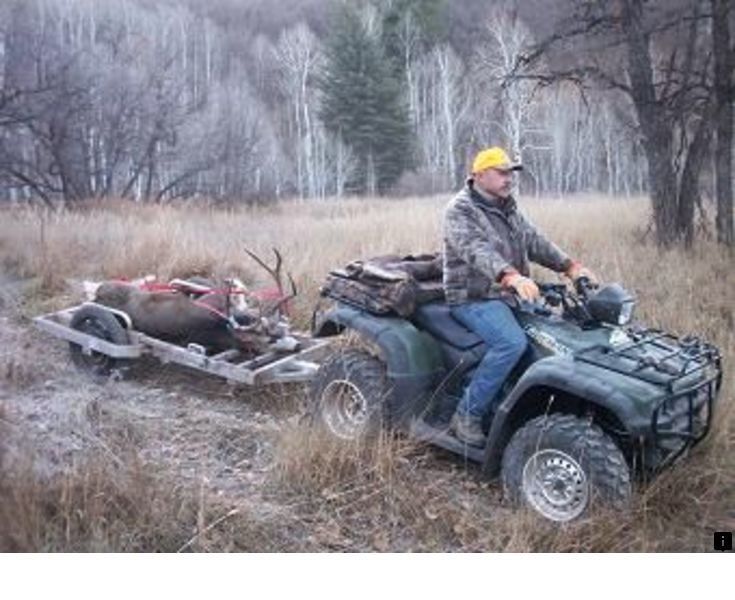All-Terrain Vehicles (ATV), Off-Road Motorcycles, and Snowmobiles purchased October 1, 2010 or later are required to be titled. Side by side Utility Vehicles (UTV), purchased on or after October 1, 2017, are also required to be titled. This includes all terrain vehicles (ATV), off highway motorcycles, and snowmobiles. A nontransferable ORV decal will also be issued at the time of titling an ATV, UTV, off-highway motorcycle or snowmobile. The decal issued by the Motor Vehicle Administration (MVA) will not be recognized by the Department of Natural Resources (DNR) for use on authorized DNR trails.
If you purchased your ORV from a dealership, the dealer will have the title transaction processed and issue the ORV decal. If the dealer is unable to process the transaction or the ORV was purchased through a private sale, you need to take your documents to a licensed Maryland title service to be electronically processed.
For special or unusual circumstances, the work can be processed at any full service MVA office. If an owner of an ORV has purchased the vehicle prior to October 1, 2010 (UTVs, prior to October 1, 2017), they have the option to title the vehicle.
To title your newly purchased new or used Off-highway Recreational Vehicle, you will need to submit the following documents (along with payment for taxes and other required fees):
Proof of Ownership. You will need to submit the original Certificate of Origin for your new ORV or the ORV's current title if the vehicle is used. The ownership document must be properly assigned to you. If you purchased your ORV from a private owner and the ORV was never titled, you need the seller's original Certificate of Origin and a bill of sale. An Affidavit of Ownership of a Moped, Motor Scooter or Off Road Vehicle form (VR-450) may be used in the event that no other type of ownership document can be obtained.
Applications. The Application for Certificate of Title form (VR-005) and the Application for Title Decal for Motor Scooters, Mopeds, ATVs, UTVs, Off-Road Motorcycles and Snowmobiles form (VR-337) must be completed. The fee for a Maryland title is $35 and there is a $5 fee for the Title Decal. The excise tax fee will be determined as stated below.
Note: When the affidavit of ownership is used, there will be no need to use a separate application for title or application for a decal.
The Application for Certificate of Title form (VR-005) and the Application for Title Decal for Motor Scooters, Mopeds, ATVs, UTVs, Off-Road Motorcycles and Snowmobiles form (VR-337) must be completed. The fee for a Maryland title is $35 and there is a $5 fee for the Title Decal. The excise tax fee will be determined as stated below.
Note: When the affidavit of ownership is used, there will be no need to use a separate application for title or application for a decal.
Proof of Purchase Price. Maryland dealers may certify the purchase price on the application for Maryland title. If the vehicle was purchased from an out of state dealer, the original bill of sale, the carbon copy of the bill of sale or a notarized copy of the original bill of sale is required. For a vehicle purchased from a private sale, you will need a bill of sale signed by all seller(s) and buyer(s) if the title document does not have a place for the seller to certify the sale price.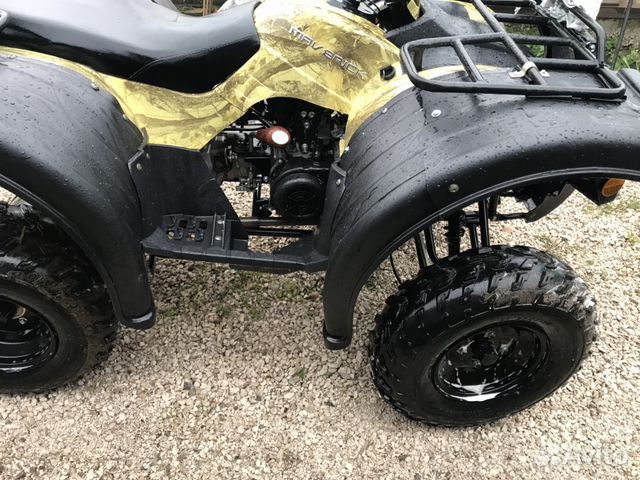 The bill of sale must state the sellers name, the buyers name and the year, make and vehicle identification number and the purchase price of the vehicle. A notarized bill of sale signed by all sellers and buyers is required if
any of the following conditions apply:
The bill of sale must state the sellers name, the buyers name and the year, make and vehicle identification number and the purchase price of the vehicle. A notarized bill of sale signed by all sellers and buyers is required if
any of the following conditions apply:
Maryland Excise Titling Tax. An Off-highway Recreational Vehicle purchased from a licensed dealer, is assessed excise tax based on the agreed upon price of the vehicle, by the buyer and the seller including any dealer processing charge, with an allowance for trade-in. Manufacturer rebates are taxable, however dealer rebates and discounts are not. A vehicle purchased from a private owner is assessed 6%of the purchase price verified by a notarized MVA Bill of Sale (form VR-181), signed by both the buyer(s) and the seller(s) in which the actual price paid for the vehicle is stated. In other cases, 6% is charged on the greater of the total purchase price or the valuation shown in a national publication of used motorcycle/snowmobile/ATV/personal watercraft values adopted for use by the Administration will be used to establish the tax.
Manufacturer rebates are taxable, however dealer rebates and discounts are not. A vehicle purchased from a private owner is assessed 6%of the purchase price verified by a notarized MVA Bill of Sale (form VR-181), signed by both the buyer(s) and the seller(s) in which the actual price paid for the vehicle is stated. In other cases, 6% is charged on the greater of the total purchase price or the valuation shown in a national publication of used motorcycle/snowmobile/ATV/personal watercraft values adopted for use by the Administration will be used to establish the tax.
Note: Excise tax will not be charged if Maryland sales and use tax was charged at the time the Off-highway Recreational Vehicle was purchased and proof of tax payment is submitted. The MVA may require you to submit additional documentation to substantiate the purchase price.
Odometer Disclosure Statement. The mileage must be recorded on the ownership document at the time of purchase if the ORV is equipped with an odometer.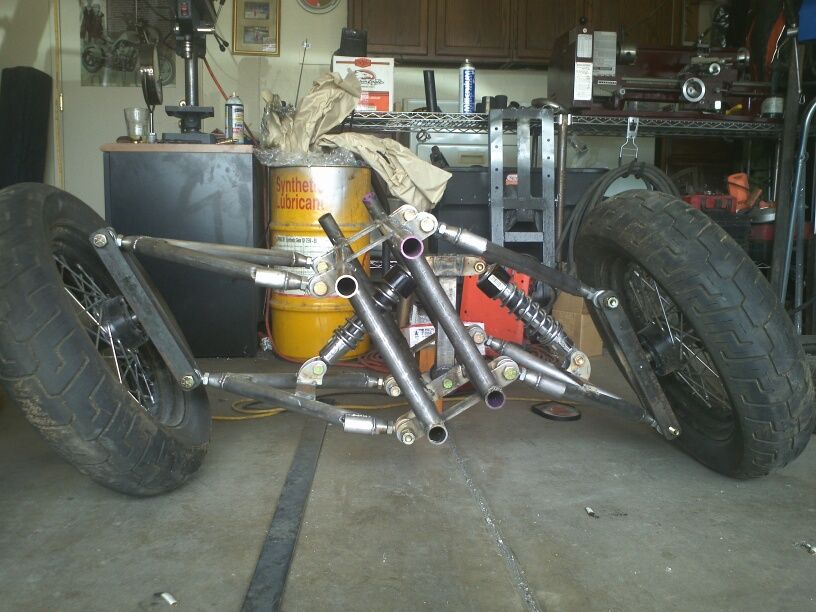
Under certain circumstances, additional information and/or forms may be required:
Lien Information. If you borrowed money to buy the ORV, the lien information may need to be recorded on the Maryland title application (form VR-005). The MVA form titled Security Interest Filing (VR-217) must be used if a second lien is to be placed against the title.
Lien Release. The existing title must show the lien was released (if applicable). Most out of state titles have a place on them for the release of the lien, while a few states have a separate lien release document that is issued upon release of the lien. In addition, you may have received a lien release letter on the company's letterhead, which may be submitted.
Power of Attorney. If someone other than you, the new owner, is signing the titling forms, this document is required.
Situations may vary when purchasing an Off-highway Recreational Vehicle.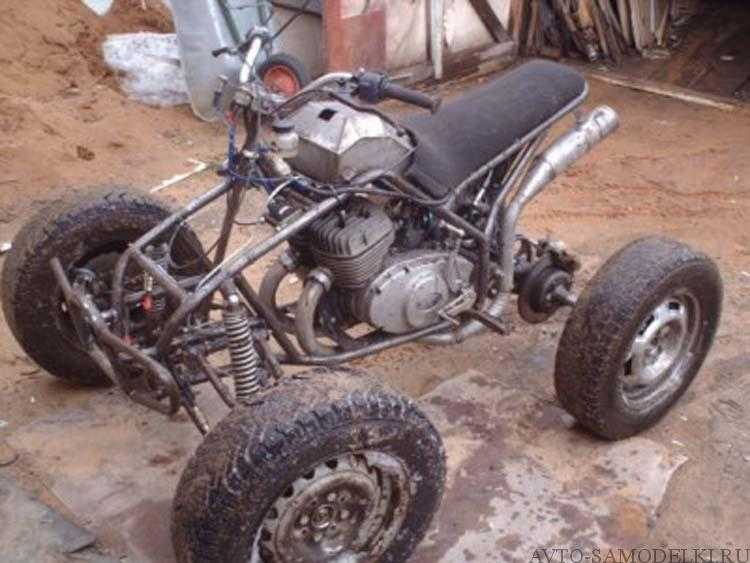 If you do not meet the above criteria or require assistance, please contact the MVA. You will receive a response back within 3 business days.
If you do not meet the above criteria or require assistance, please contact the MVA. You will receive a response back within 3 business days.
Click here for a listing of tag and title services that may process these transactions for you.
For telephone questions:
MVA Customer Service Center: 1-410-768-7000
TTY/Hearing Impaired: 1-800-492-4575
Out-of-State: 1-301-729-4550
An all-terrain vehicle (ATV) is defined as "Any motorized vehicle manufactured and used exclusively for off-highway use with an unladen dry weight of 1,500 pounds or less, traveling on three, four or more non-highway tires, with either:
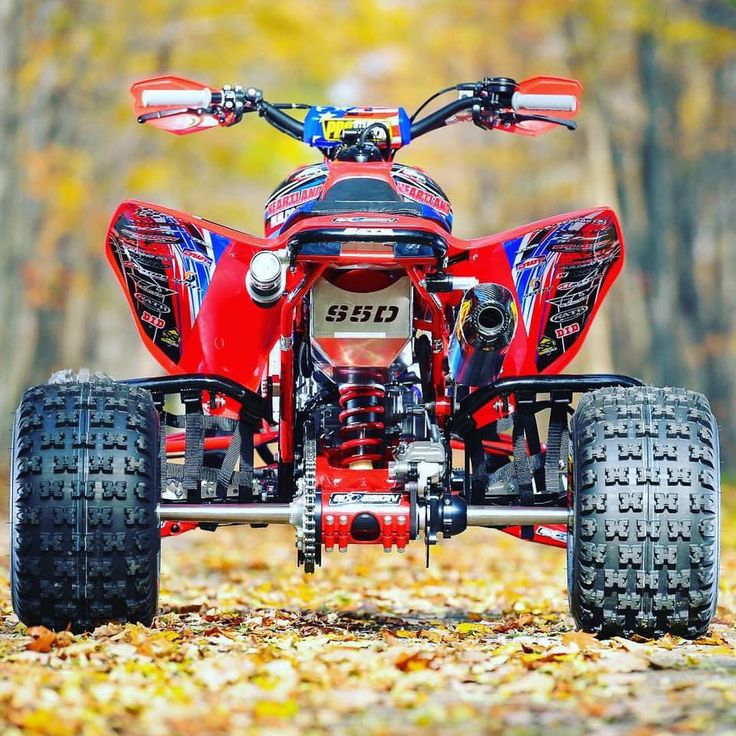 "
"
You have 30 days from the date of purchase to title and pay sales tax on your newly-purchased ATV. If you do not title the ATV within 30 days, there is a title penalty of $25 on the 31st day after purchase. The penalty increases another $25 for every 30 days you are late with a maximum penalty of $200. Our online sales tax calculator may help you calculate the taxes and fees you will pay.

There are two convenient options:
You will be issued a registration (decal) that must be renewed every three years.
To obtain information regarding your ATV registration (decal) renewal requirements, you may visit the Department's Renewal Requirements Inquiry system.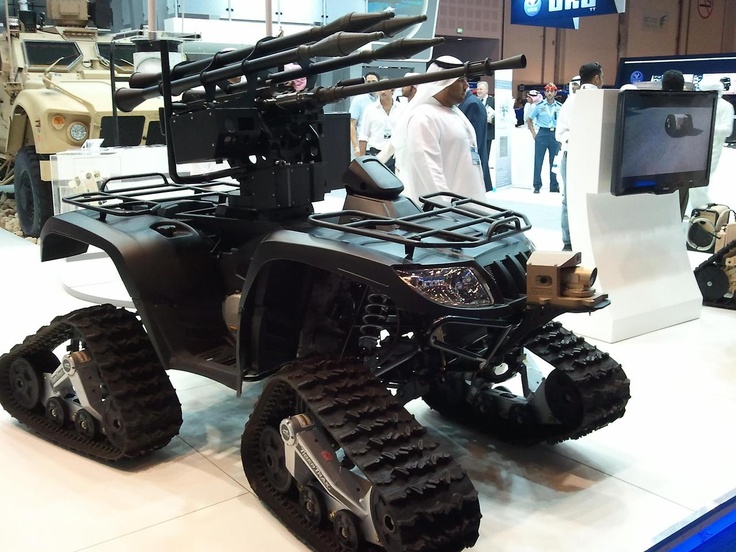
To renew an ATV registration (decal), the owner must submit the following:
There are four convenient renewal options:
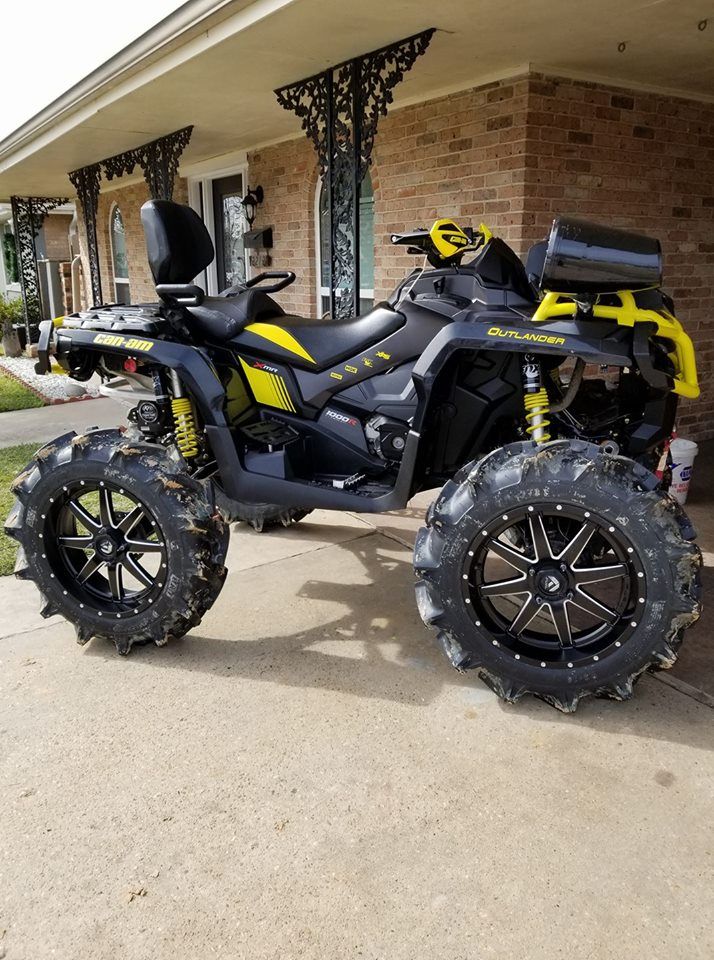
NOTE: A $5 renewal penalty will be charged if you renew your ATV registration (decal) after the expiration date.
For questions regarding equipment requirements, restrictions, and regulations regarding operation of an ATV, please refer to Sections 307.198 and 304.013, RSMo.
A utility vehicle is defined as “Any motorized vehicle manufactured and used exclusively for off-highway use which is more than 50 inches but no more than 80 inches in width, measured from outside of tire rim to outside of tire rim, with an unladen dry weight of 3,500 pounds or less, traveling on 4 or 6 wheels, to be used primarily for landscaping, lawn care, or maintenance purposes."
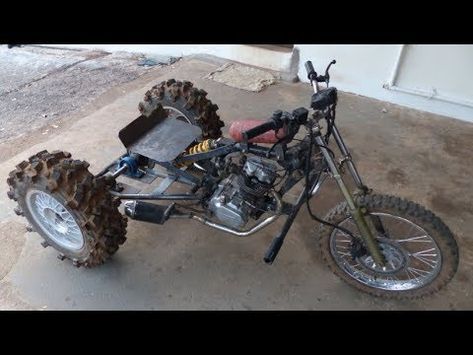

A recreational off-highway vehicle is defined as "Any motorized vehicle manufactured and used exclusively for off-highway use which is more than 50 inches but no more than 80 inches in width, measured from outside of tire rim to outside of tire rim, with an unladen dry weight of 3,500 pounds or less, traveling on 4 or more non-highway tires and which may have access to ATV trails."
ATV from the store is a pleasure not available to everyone. Therefore, many craftsmen make quadrics with their own hands. And in this article we will talk about the most interesting of them.
Therefore, many craftsmen make quadrics with their own hands. And in this article we will talk about the most interesting of them.
In the manufacture of an ATV, everything that is in the garage and nearby can be useful. Each do-it-yourself vehicle is unique and individual, so it is difficult to talk about drawings and diagrams.
Few people describe in detail the process of building their offspring, which makes it extremely difficult to find specific information. But there are exceptions.
in 2012, the talented designer S. Pletnev shared the drawings and nuances of building his offspring.
What was used in the design of the vehicle:
| Weight | 430kg |
| Length | 2300 mm |
| Width | 1250 mm |
| Handlebar / seat height | 1250 / 900 mm |
| ground clearance, | 300 mm |
| Wheel base | 1430 mm |
| Track | 1045 mm |
| Maximum speed | 65 km/h |
Transmission made from AvtoVAZ units with some modifications.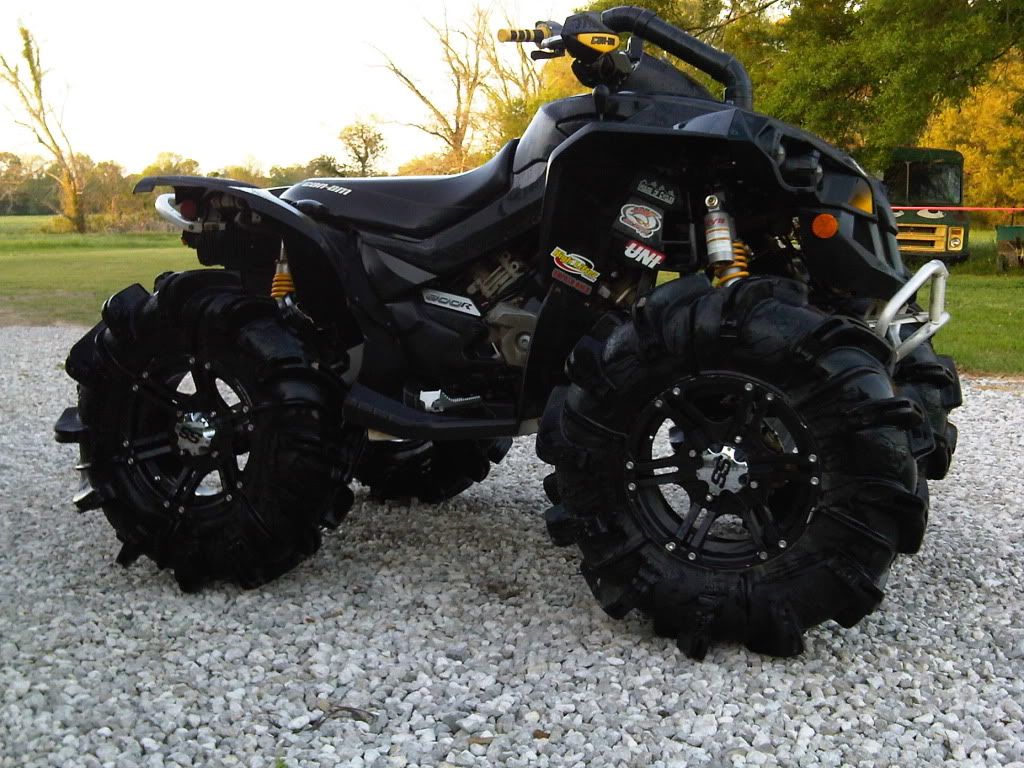 For example, to reduce speed and increase torque, a chain drive was used instead of the main pair.
For example, to reduce speed and increase torque, a chain drive was used instead of the main pair.
Cross-wheel gearboxes are borrowed from the classics, axle shafts are removed and replaced by CV joints from the front-wheel drive vase. Equal velocity joints are also used in other transmission units.
Independent suspension on triangular wishbones. Shock absorbers from Oka.
Homemade muffler of 2 sections, insulated with asbestos.
Body kit made of fiberglass. The creation of such plastic took 10 kg of epoxy resin, 1 kg of plasticizer and the same amount of hardener. 15 meters of fiberglass and 5 meters of glass mat.
ATV body kit - fiberglass. I pasted it for the first time, and therefore first studied the recommendations for the implementation of the relevant work. But as it turned out, this process is painstaking, although the result is worth it.
Bumpers and bullbars are welded from 20mm round tubes.
Photo of the finished ATV:
Material based on the article: http://modelist-konstruktor.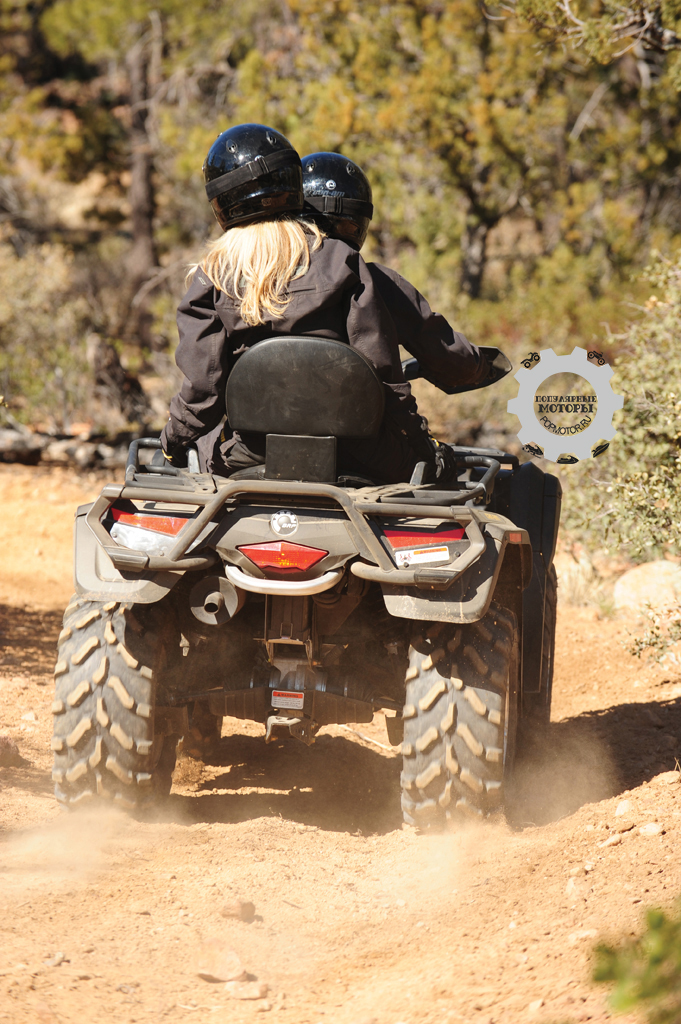 com/razrabotki/853
com/razrabotki/853
This quad is made on the basis of the Ural motorcycle.
All the details in the video.
ATV with motor IZH Jupiter. Razdatka from the motorcycle Ant.
Photo:
Generator, forced cooling, lowering, electric starter from ten, engine from a Ural motorcycle.
Video of the homemade ATV in action:
It may seem that it is quite difficult to make an ATV from the Ural, but it is not.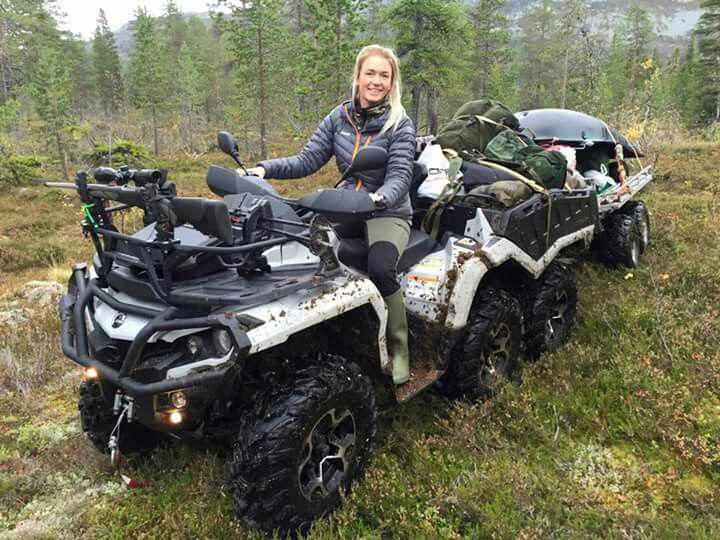 You will need to prepare the necessary parts and tools, as well as review the assembly instructions. From one old, but working motorcycle, you can make a universal four-wheeler, which will be used both for off-road driving and on the farm.
You will need to prepare the necessary parts and tools, as well as review the assembly instructions. From one old, but working motorcycle, you can make a universal four-wheeler, which will be used both for off-road driving and on the farm.
Contents
It is worth noting that it is quite difficult to assemble an ATV from the Ural 4x4 with your own hands. For its high-quality study, you will need to seek help from a team of professionals: you will need a turner, an electrician and a welder. Making the front suspension independent is more expedient than assembling a homemade ATV from the Ural 4x4. Otherwise, management may be difficult. The fact is that in order to provide all-wheel drive, it will be necessary to supplement the system with a gearbox, which will lead to an increase in the weight of the ATV.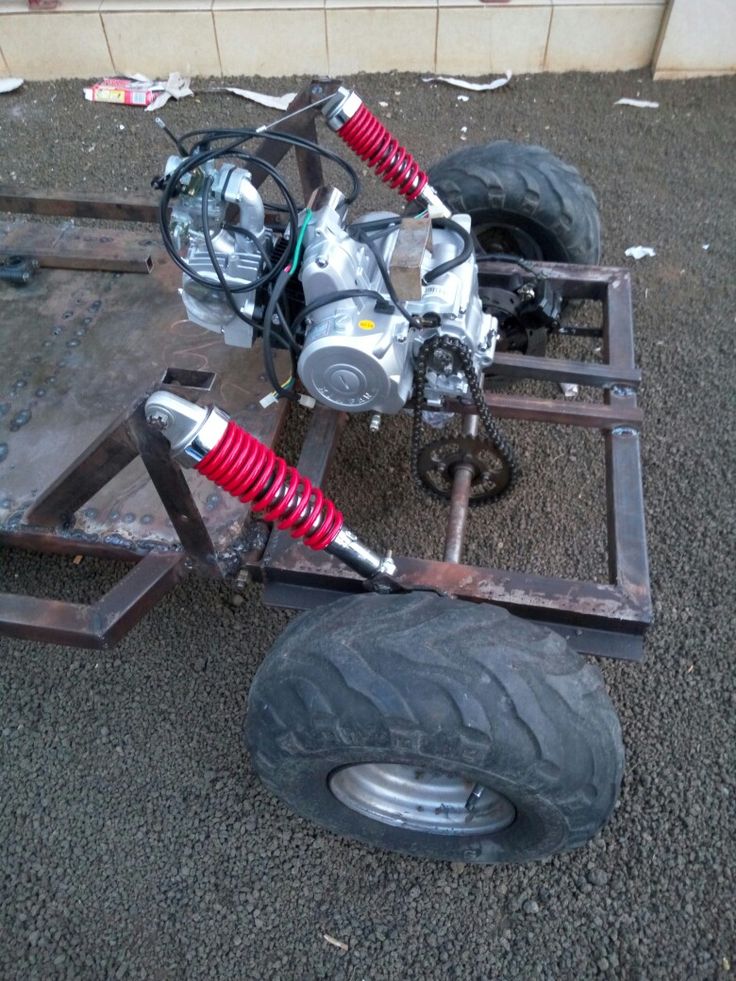 To assemble the rear-wheel drive structure, you need to prepare the following:
To assemble the rear-wheel drive structure, you need to prepare the following:
It is worth noting that the rear axle and front hubs must be taken from one car. This will avoid the procedure of fitting the discs to the fixation holes. These parts are recommended to be taken from Moskvich or VAZ. The work will require a set of hand tools, as well as a grinder and a welding machine.
The first step in building an ATV is to make the suspension. First, the old vehicle will need to be disassembled. The frame of the device must be freed from all elements, the master needs to remove the shock absorbers and the steering wheel.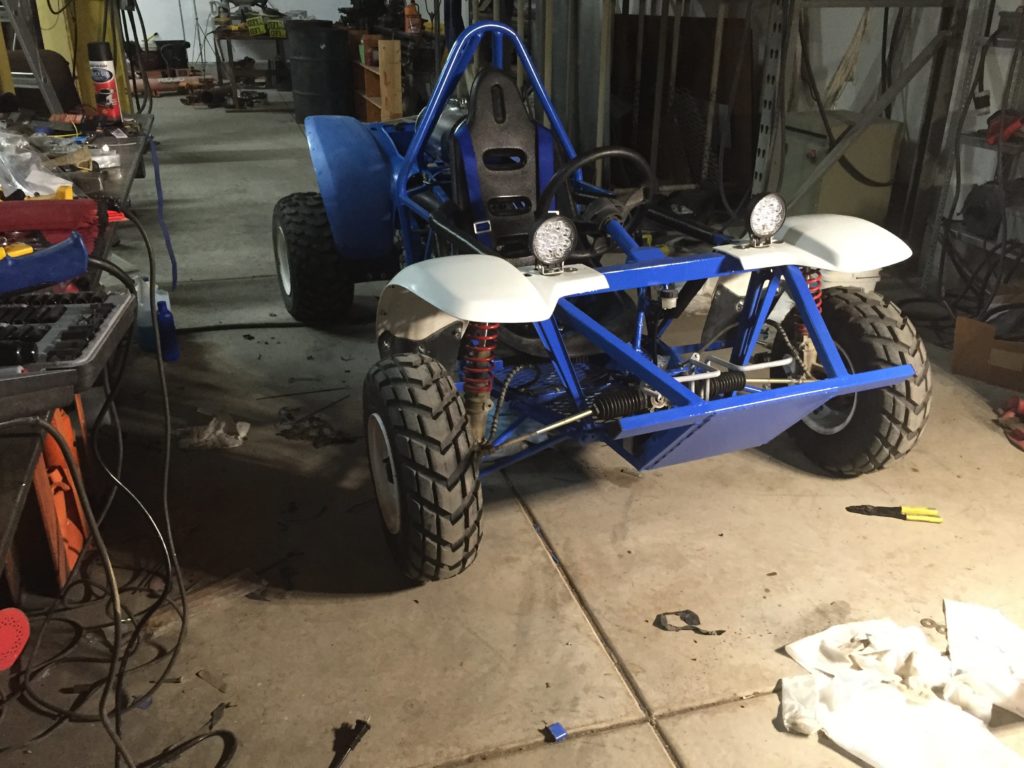 It is advisable to determine in advance what type of suspension will be installed for the all-terrain vehicle from the Ural, for example:
It is advisable to determine in advance what type of suspension will be installed for the all-terrain vehicle from the Ural, for example:
Of course, it is best to stay on the suspension with spring shock absorbers. They can be taken from an old motorcycle. Since the device will have 4 wheels, the missing mechanisms will have to be purchased. The pendant in this case will have the shape of the letter "A". It is necessary to correctly calculate the weight of the future ATV. In this case, the shock absorbers will ensure a smooth ride when driving on hard off-road.
ATV frame will have to be made from scratch. It is assembled from metal pipes, which must be both strong and light. Some blanks can be taken from the Ural. Its frame is suitable for such purposes, since the weight of the structure is low.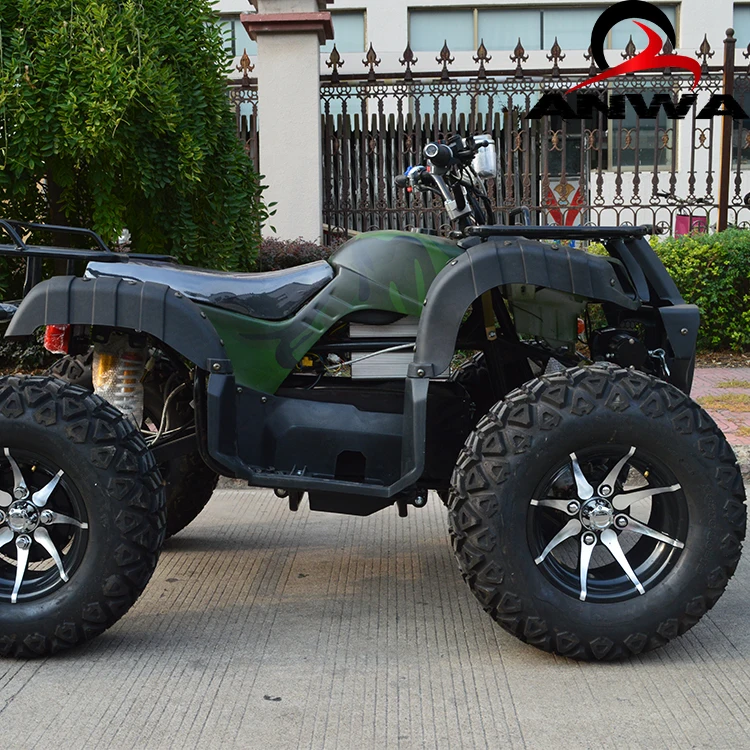 At the same time, pipes taken from a motorcycle are distinguished by good flexibility and strength.
At the same time, pipes taken from a motorcycle are distinguished by good flexibility and strength.
But it is still recommended to take some more material to assemble the frame. Such pipes should not be too thick. Otherwise, motor vehicles will turn out to be heavy, devoid of maneuverability and dynamism.
Motor from "Ural" is most often used to create homemade ATVs. This engine is quite powerful and durable, which provides motor vehicles with high functionality. Such an ATV can be used both for off-road driving and for household purposes.
It is worth noting that the Ural engine is quite powerful. This is a four-stroke two-cylinder engine that has a volume of 750 cm³ and a power of 41 hp. With.
When assembling, it is recommended to use not only the engine from the Ural motorcycle, but also its transmission. In this case, the system will work smoothly. The presented motorcycle has a gearbox with 4 gears, as well as reverse gear. The standard equipment also contains a cardan rear wheel drive.
The standard equipment also contains a cardan rear wheel drive.
The steering wheel from the Ural is also used in the design, but some modifications will be required. We need to add drives that will now turn two wheels. Leverage, ball bearings, which are taken from the car, are added to the design. Additional parts can also be purchased from a specialist shop. When assembling, you need to achieve high accuracy and comfort of the steering wheel of the future ATV.
Wheels are also desirable to take from an old car. They have sufficient width, which allows for good stability and maneuverability even in very bad road conditions. The diameter of the wheels can be quite large, since the engine from the Ural is powerful. It will allow you to develop a good speed even in conditions of increased load.
The assembled frame attaches attachments, gas tank and other structural elements. Each node must be firmly fixed on the prepared platform.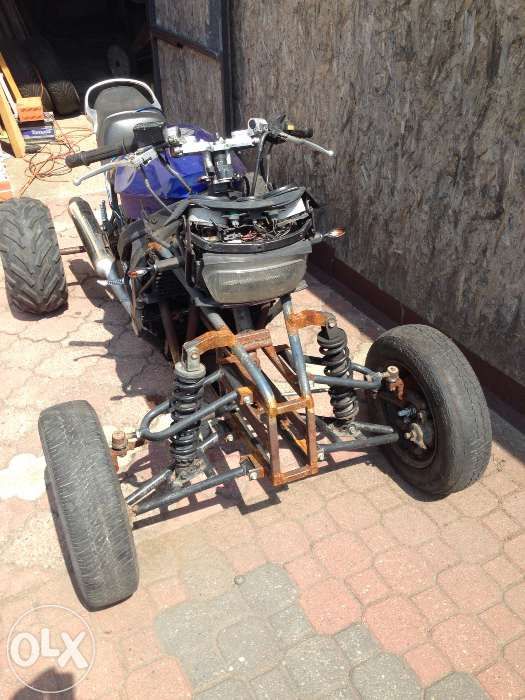 It is important that the vehicle remains stable after assembly.
It is important that the vehicle remains stable after assembly.
For many motorcycle owners, it is important that the appearance of the ATV is spectacular. Therefore, the design must be thought out in advance, before assembly begins. You will need to install a place for the driver, lighting fixtures. Turn signals and headlights are also removed from the donor motorcycle.
Before starting work, a drawing is developed that displays all the details, assemblies and mechanisms of the structure. First, a frame is assembled from pipes by welding. It is necessary to control that in all areas the structure is even. After that, the rear and front axles are attached to the frame.
After that, the engine is firmly attached to the metal frame, which can be located both in the front and rear of the structure. The motor is attached with bolts that must be firmly tightened with a wrench.
Drivetrain mounted on the rear wheels.